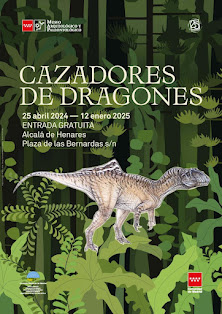Otra de las contribuciones presentadas por los miembros del Grupo de Biología Evolutiva de la UNED en IX Jornadas Internacionales sobre Paleontología de Dinosaurios y su Entorno en Salas de los Infantes (Burgos) fue el póster titulado: “A tibia of Iguanodon bernissartensis with patological morphology from the Lower Cretaceous of Arcillas de Morella Formation (Castellón, Spain)”.
En este trabajo, se ha presentado la descripción preliminar de una anomalía patológica localizada en un espécimen de Iguanodon bernissartensis de la cantera de Mas de la Parreta, en la localidad castellonense de Morella. El resumen es el siguiente:
The vertebrate fossil record of the Barremian Arcillas de Morella Formation is one of the most abundant and diverse in the Iberian Peninsula, being remarkable and the most representative of this formation the Mas de la Parreta quarry (CMP), located at the southwest of the locality of Morella (Castellón province, Spain). Here the best represented, and by far the most abundant group of dinosaurs throughout the Iberian Lower Cretaceous, are styracosternan ornithopods. To date three styracosternan species have been identified: Iguanodon bernissartensis, Mantellisaurus atherfieldensis and Morelladon beltrani. Among the material identified as belonging to Iguanodon bernissartensis, CMP-11 is one of the sites inside the CMP in which fossil bones of this species have been discovered. Among cranial and postcranial bones recovered from CMP-11 is interesting a right tibia with an anomalous posteromedial bone overgrowth located at mid-height of the tibial shaft.Here a comparative anatomical study of this tibia was carried out to discriminate possible pathologies from myological characteristics, being that the anomalous overgrowth area does not correspond to the origin or insertion areas of the muscles described for the hindlimbs in styracosternans or hadrosaurids ornithopods. A differential diagnosis has been developed based on a macroscopic analysis. The presence of new bone growth in a tibial diaphysis may be considered as an involucrum) and, tentatively, as a result of a pyogenic osteomyelitis, an infectious condition already observed in dinosaurs.
-----
Más información:





























No hay comentarios:
Publicar un comentario